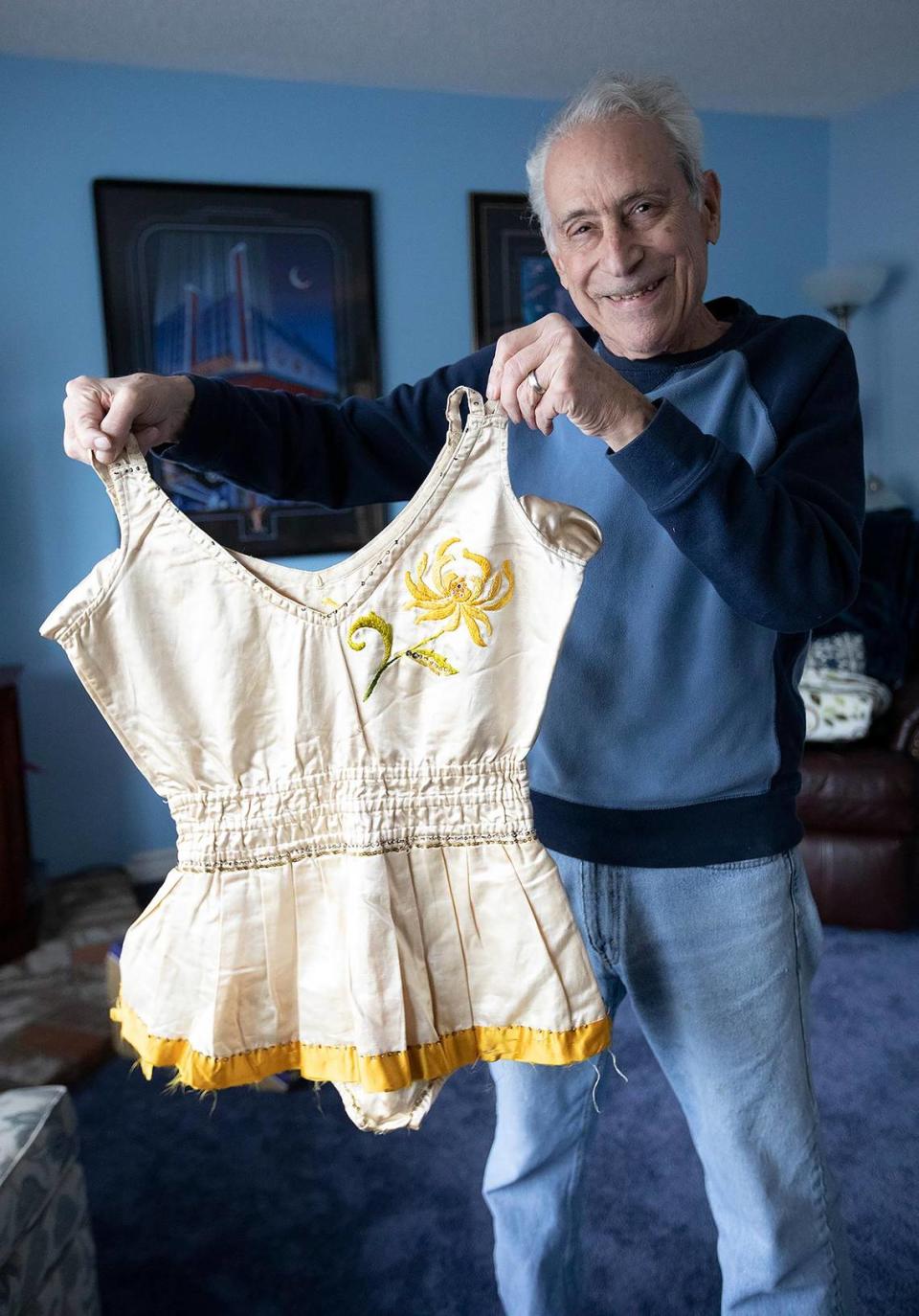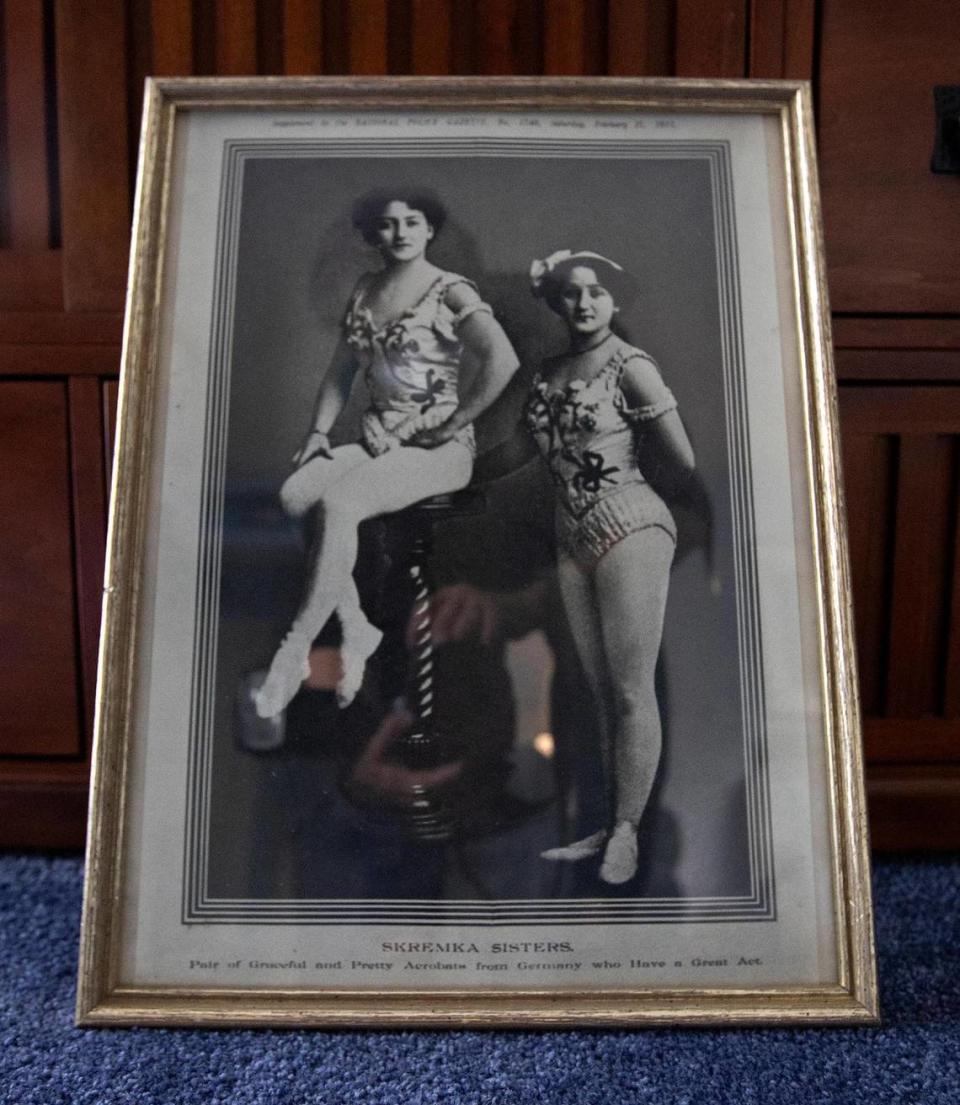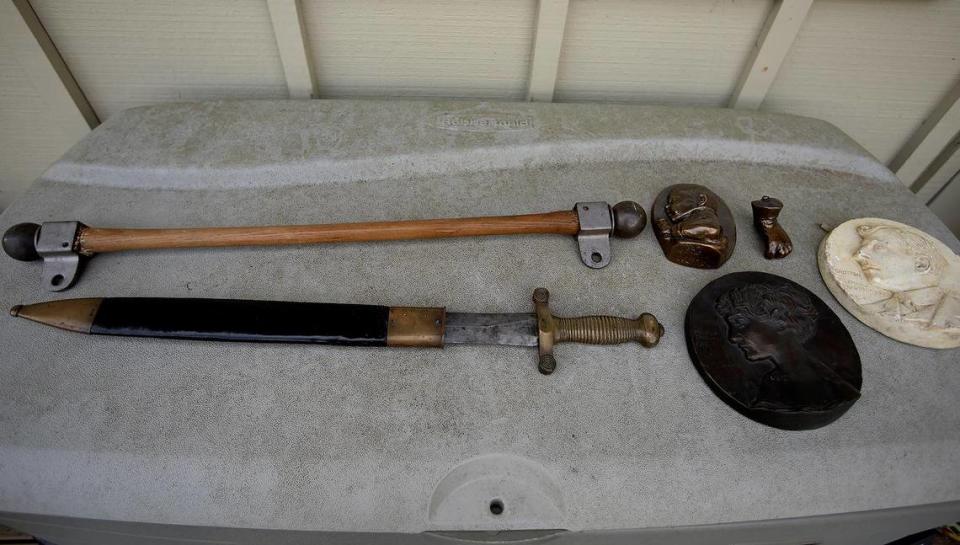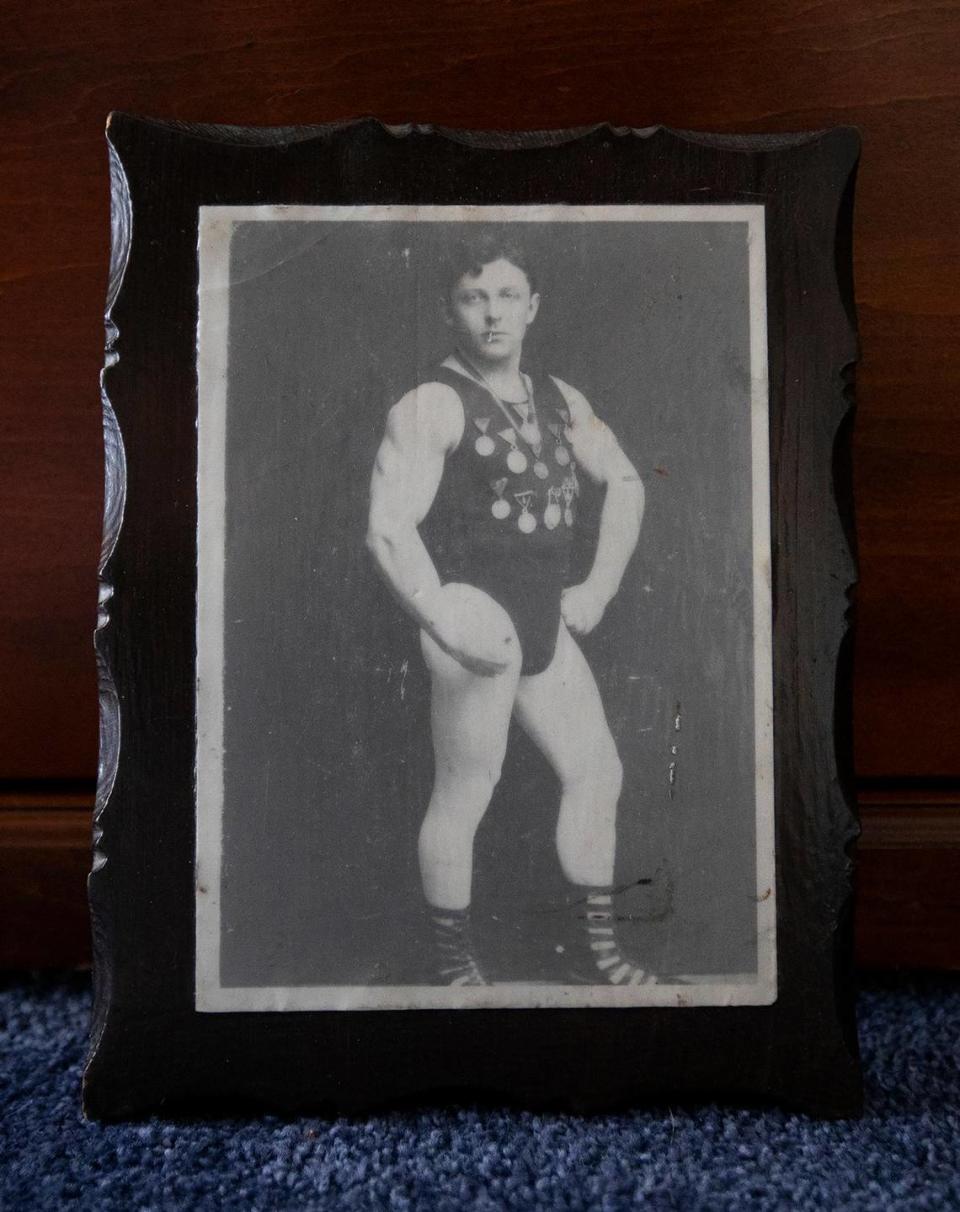In his basement, California man finds trove of circus memorabilia dating back 100 years
Got any musty old boxes in your attic or basement?
As Jim Major of Cambria learned recently, check them out before you chuck them in the trash, or you might wind up tossing some historical family treasures.
In early January, Major found just such “a little box while rummaging around in the basement” of his home, which had been his parents’ house for decades, he told The Tribune in a series of interviews.
To his astonishment, the box was full of early to mid-1900s vaudeville and circus memorabilia that reflected the history of his performing grandparents Louise “Lita” Skremka and Emil von Mogyorossy, and his step-grandfather Camilo “Montrose” Schneider.
Clippings. Costumes. A prop sword. A trapeze bar, allegedly one of the first to have a metal safety bar through the wood.
Interviews from the 1950s. Photographs. Posters. Several notebooks filled with writings about their travels and performances, probably written in the careful script of his step-grandfather.
There were some other family mementos as well, including art castings that von Mogyorossy made, including a self-portrait, an oval one of his wife’s sister and one each of his tiny daughter’s face and foot.
Some of the items are likely more than a century old.
“I guess my grandparents’ trapeze bar and stage sword are the coolest,” Major said. “But the posters that are framed are stunning, I think.”

Tracing the roots of his circus-performing family
Major’s astonished reaction when he saw what was inside the first box? “Holy s—t!!!” he recalled, then laughed and apologized for his language.
His mother, Louise Mogyorossy Major, “grew up in the Depression, and she never threw anything away,” her son explained, so he didn’t hold out much hope for the contents of the box, even though she had alluded in the past to the possible presence of such a collection somewhere.
What he found was validation of those sketchy family memories and stories.
Major posted on Facebook about his find, “a trove of early 1900s circus memorabilia from my grandparents. ... (They) performed worldwide but mostly in New Zealand and Australia. They were of Hungarian and German descent, so I guess they didn’t want to be involved in the pending war.”
The box also included “many notes and letters written in ‘old German’ script,” Major said, which he can neither read nor translate.
He said he’d be grateful to anybody willing to assist him in translating and unlocking the secrets revealed in those writings. “I’d really like to know what they say. ... Any help would be appreciated. Danke schoen!”
Potential translators can email Major at jimandroberta2@charter.net.
As a bonus extra, his interview with The Tribune inspired Major to root around some more downstairs.
“Lo and behold!” he said, he found another box of memories, including “more circus stuff, historical photos and more recent things,” such as pictures of his daughter, niece and nephew.

Cambria man’s grandparents performed around the world
Major’s family had shared only spotty knowledge of his grandparents’ history and subsequent years, he said.
His grandmother performed in a vaudeville aerialist act with her sister, Mignon Skremka.
His grandfather performed as “Emil Crotton” with “Otto Arco,” both of which were stage names for the so-called “Crotton Brothers.”
Why Crotton? Major doesn’t know, but maybe it was easier to pronounce than “von Mogyorossy.”
According to www.oldtimestrongman.com/blog/tag/emil-von-mogyorossy, the two athletes “performed feats of strength, muscle control, and hand balancing, dressed as Roman gladiators.”
Among the photos Major found in the box was one of “Emil and Otto dressed in the gladiator outfits,” he said, conjecturing that the sword in the first box probably was a prop to use with those costumes.
“The blade is blunt, not sharp at all, and about 2 feet long,” he said, with a short wooden handle. “It looks like it’s been re-sheathed, because the leather looks too new” to be about a century old.

Somewhere, the Crotto and Skremka acts intersected, Louise and Emil met, and “my grandfather married my grandmother,” Major said. Then, “their ‘Crotton and Skremka’ act traveled through Australia.”
Their daughter, Louise Mogyorossy, was born in 1913, and then — none of the family members know why — “my grandmother came back to the U.S. when Mom was 1, and my grandfather stayed in Australia,” Major said. After that, he added, “nobody really knows for sure what happened to him.”
(While Major knew his grandmother — she lived to be 101 years old — when he tried to record in her later years some of her memories about her background, “she clammed up.”)
However, the second treasure box he found did have a possible clue in it: a small scrap of paper dated “31 December 1954” from the Bloomfield hospital in Orange, Australia. That community is where family rumor had said Major’s grandfather died, although previous attempts to find his death certificate there were unsuccessful.
Major has contacted the Australian hospital in hopes of learning more.

In 1918, Major’s grandmother married Schneider. According to a 1959 interview he did with the Fresno Bee, the slender, agile man was “the top mounter” with his family’s Montrose Troupe of acrobats, performing in Europe, Australia and the U.S., including on tour with Ringling Bros.
A top mounter apparently is the acrobat who ascends to the top of the human “stacking” in which the athletes stand on each other’s shoulders, often in triangle formation. It’s a potentially dangerous maneuver sometimes seen today in complex cheerleading routines.
The Montrose Troupe disbanded during World War I, and Schneider went into life insurance the same year he got married, a business he stayed in for three decades until he retired in 1953.
Still agile? Yes. Major remembers how he watched “my step-grandfather do cartwheels when he was 75!”
How the treasures ended up in Cambria
Fast forward to when Major’s mom married Edward Major in 1938. He became a surveyor for Fresno County.
They moved to Clovis in 1953, eventually bought a somewhat ramshackle property near the Yerba Buena Street stoplight in Morro Bay, and then bought the small summer cottage-style Cambria house in 1979.
They moved into the Cambria home in the early 1980s.
Their historical treasure trove of family circus memories has likely been in the basement ever since, until the boxes were unearthed in early January by their incredulous youngest son.
Major, a retired engineer, purchasing/procurement supervisor and former military mapmaker and forest-service surveyor, must have picked up some of his family’s athletic traits. He participated in gymnastics in school, along with “playing basketball until I was 65 and pickleball until I was 70. Now I’m down to ping-pong.”
Major’s dad died in 1996, his mom in 2010.
After her death, Major and his wife, Roberta Major, began renovating the Cambria house as a vacation rental, but then decided to move into it instead, relocating from Danville. They immersed themselves in the community, volunteering for activities as diverse as light station docent, Hearst Castle living-history actors and in local nonprofits and clubs.
Roberta developed a fast-progressing case of dementia last fall. Her condition deteriorated so quickly, within less than a month, she had to be transferred to a care home in Los Osos. Her husband is hoping there’ll be a vacancy soon at a Cambria facility.
What’s ahead for the circus memorabilia?
“I don’t know yet,” he said. “For now, I’m planning to hand it down to a family member,” so the legacy can be shared with future generations.

 Yahoo Movies
Yahoo Movies 
